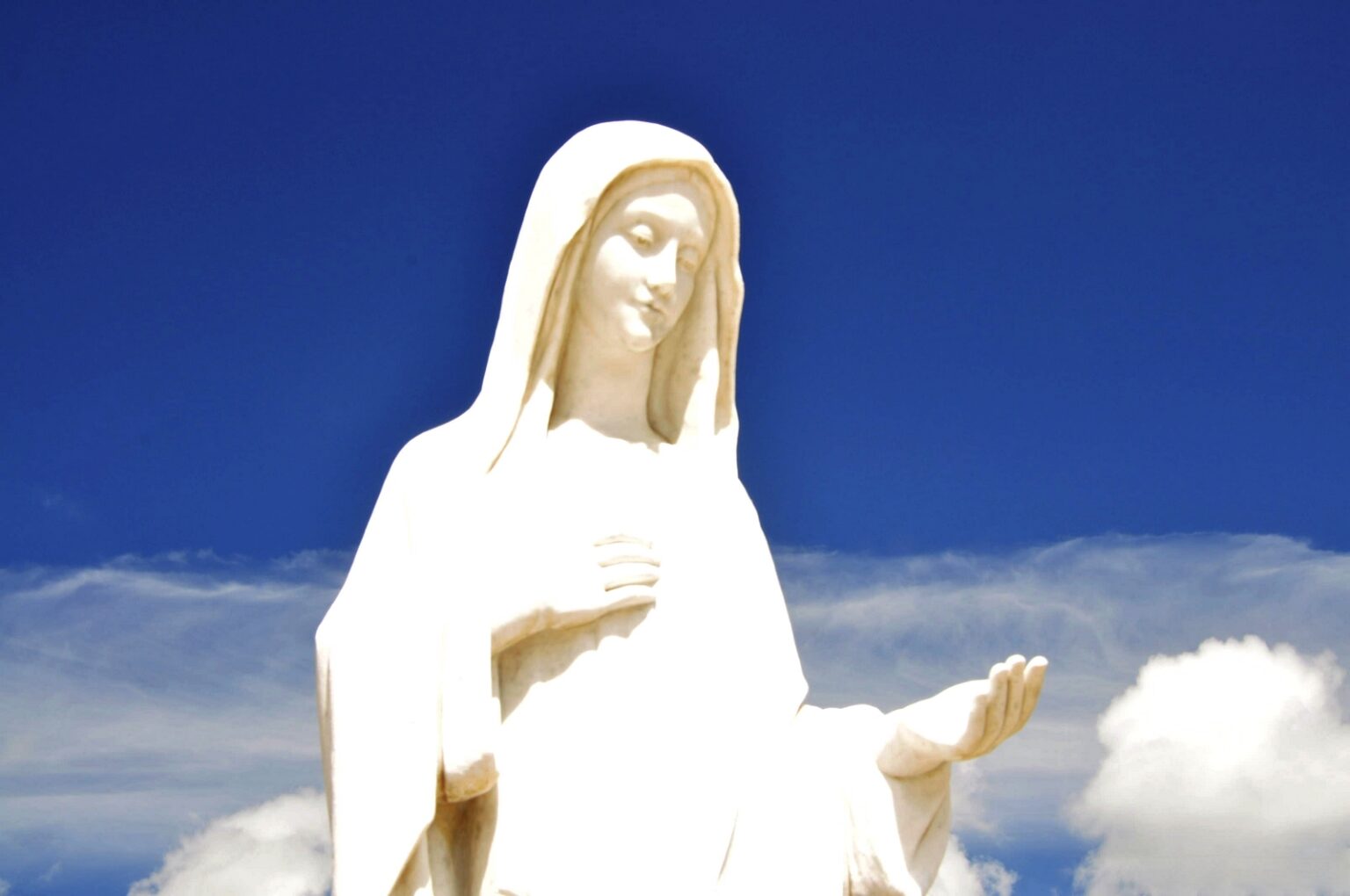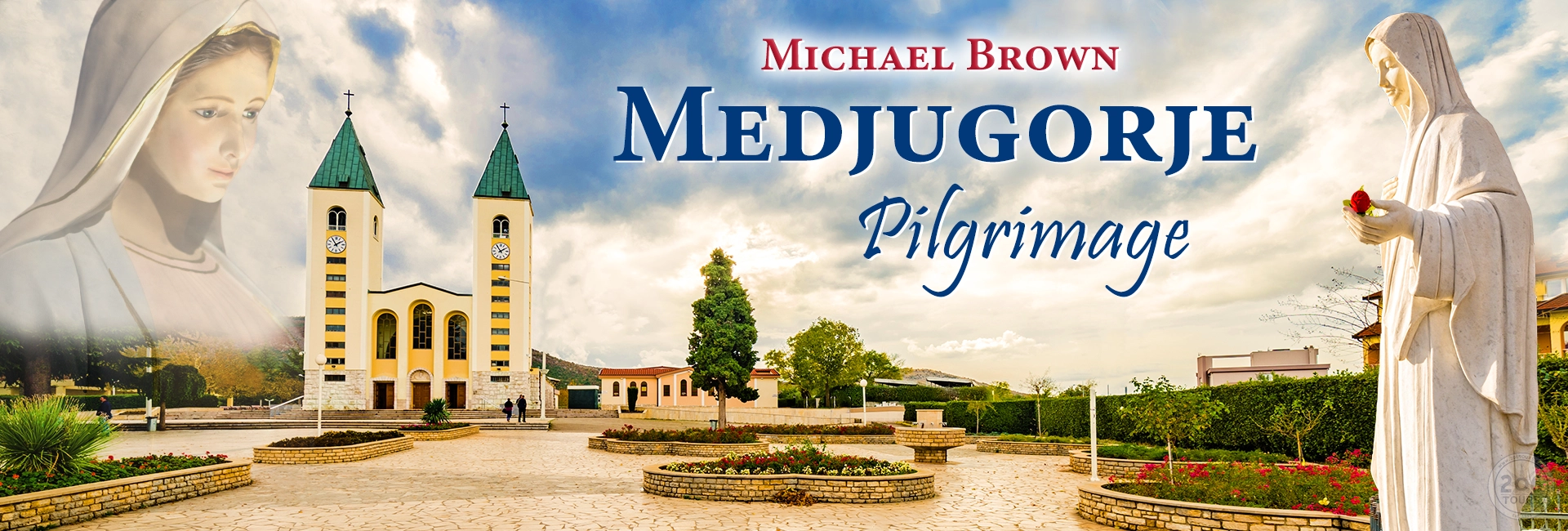
No documents through the decades have summarized the apparitions more articulately.
Aside from the thorough endorsement of the devotion—complete with an encouragement for clergy to promote the site—certain aspects of it stood out in a special way. Perhaps predictably, the Dicastery for the Doctrine of the Faith pushed back on a supposed Medjugorje message from long ago that is at variance with the official Church date for the Virgin Mary’s birthday.
“Although messages of this type are infrequent in Medjugorje, we can find some of them that are explained solely from the personal desires of the alleged visionaries,” said the Note. “The following is a clear example of these misleading messages: ‘This August 5 will mark the celebration of the second millennium of my birth […]. I ask you to prepare yourselves intensively over three days […]. Do not work on these days’ (1 August 1984).”
The official date of her nativity is September 8.
At the press conference releasing the Notification, Cardinal Manuel Fernández , prefect of the dicastery, announced that Archbishop Aldo Cavalli, special Vatican envoy to Medjugorje, henceforth will “discern any future messages—or past messages that have not yet been published—and should authorize them before any publication.” In other words, the Church at large is taking control of the words emanating from the apparitions.
More drama, much more, in that: for what will happen this week—Wednesday, September 25—when the monthly message is set to be released, as has been done on the twenty-fifth of each month since 1987?
Additional questions: If “secret” prophecies possessed by all six seers are announced beforehand (as one seer says hers will be, ten days before the first event in her secrets occurs, by a priest she has chosen), will that change, and will this too now have to go through an official process? If so, might that not delay what could be an urgent message to mankind? (A day after the beginning of the Ukraine war, on February 25, 2022, our Lady asked for urgent prayer. Timing was of the essence: “Help me with prayer, little children, that Satan may not prevail. his power of death, hatred, and fear has visited the earth.”)
The document repeatedly advises against a focus on the seers, whom it refers to as “alleged” throughout. “It should be noted,” said the Vatican, “that such experiences occur above all in the context of pilgrimages to the places associated with the original events rather than in meetings with the ‘visionaries to be present for the alleged apparitions.”
At the press conference, Cardinal Fernández —whose dicastery has now authorized approval for more mystical devotions than perhaps any Vatican official in recent centuries—said, “It should be noted that such experiences occur above all in the context of pilgrimages to the places associated with the original events [our italics] rather than in meeting with the ‘visionaries’ to be present for the alleged apparitions.”
“Original events.”
This was remarkable verbiage in its obvious reference to what is called the “Ruini Report,” a papal commission that, after four years of intensely studying Medjugorje, concluded that at the very least, the first week of apparitions (starting June 24, 1981, before seers began having some apparitions individually) were authentic. To quote it directly: “On the basis of these data, the International Commission considers that it can affirm with reasonable certainty that the first seven apparitions prove to be intrinsically credible, as they were capable of fostering in those who saw them an awakening of faith, a conversion in their way of life, and a renewed sense of belonging to the Church.”
In essence, Cardinal Fernández was confirming the supernatural nature of Medjugorje, although, overall, said Fernández , when he asked the Pope if he wanted “to move” in the direction of stating that all the experiences and messages were supernatural, he said the Pope had replied, “Not at all.” The Vatican is taking pains to emphasize it has not as yet declared anything as technically “supernatural.” It might also be recalled that the Ruini Commission dispelled concerns of evil deception (“the hypothesis of a demonic origin from the beginnings of the phenomenon appears gratuitous and unfounded… by the positive fruits derived from the phenomenon itself”) but expressed concern over a lack of spiritual direction.
Meanwhile, in its statement, Rome took the opportunity to once more dispel the notion of Mary as “mediatrix.” Said the Notification (as authoritative documentation as the dicastery releases): “Special attention is required concerning the possible misuse of the word ‘mediatrix’ in reference to Mary. Although it is true that, in the messages overall, everything is attributed to Jesus Christ, while Mary cooperates with her maternal intercession, certain expressions appear that do not seem consistent with the whole: ‘I am the mediatrix between you and God’ (17 July 1986). ‘I desire to be the link between you and the Heavenly Father, your mediatrix (18 March 2012).
“Used in this way, the expression ‘mediatrix’ could erroneously lead one to attribute to Mary a place that belongs uniquely and exclusively to the Son of God made man. It would, in fact, contradict what Sacred Scripture affirms [our italics] when it says that there is only one ‘Mediator between God and men, the man Christ Jesus, Who gave himself as ransom for all’ (1 Timothy 2:5-6). These alleged messages also fail to express adequately the fact that, as St. John Paul II explained, Mary’s mediatory cooperation is ‘subordinate’ to the mediation of Christ (cf. Redemptoris Mater, par. 39). In this way, her cooperation ‘neither takes away from nor adds anything to the dignity and efficaciousness of Christ the one Mediator’ (Second Vatican Council, Lumen Gentium, par. 62).”
The document described such “errors” as “perhaps due to simply human error in expressing them.”
“In the same message of 18 March 2012, however, it is clear that Mary’s mediation does not obscure Christ’s unique mediation since hers concerns only a ‘maternal intercession’ for us: ‘Dear children! I come among you because I desire to be your mother, your advocate.’ The following messages, in which Mary emphasizes that she cannot and will not replace Jesus Christ, are especially clear on this topic: ‘I do not directly dispose of Divine graces, but I receive from God what I ask for through my prayer’ (31 August 1982). ‘Pray, and through prayer encounter my Son, so that He may grant you the strength, that He may grant you the Grace’ (23 June 2017).” (The Vatican recently rejected an alleged apparition in Amsterdam that, among other issues, called Mary “mediatrix of all Grace.”)
At the press conference:, Fernández said the wording of some of the messages are “not exactly from St. Thomas Aquinas.” As an example, he pointed to one about the faithful departed being happy when Masses are celebrated for them, a statement which could give the impression that even those in purgatory can be happy. It also said so many of the messages have Mary insisting people listen to her that they can give the impression they are more important than the words in the Bible.
“This often-repeated appeal probably comes from the love and generous fervor of the alleged visionaries who, with goodwill, feared that the Blessed Mother’s calls for conversion and peace would be ignored,” the Note said. “This insistence becomes even more problematic when the messages refer to requests that are unlikely to be of supernatural origin, such as when Our Lady gives orders about specific dates, places, and practicalities and when she makes decisions about ordinary matters.”
But overall the Church found the vast majority of the messages powerful, unique, edifying, and entirely in keeping with doctrine. It was a strong endorsement.
Materialism was also emphasized. “A constant call to abandon a worldly lifestyle and excessive attachment to worldly goods appears in the messages, along with frequent calls for conversion, which makes true peace in the world possible,” it said.
Intriguingly, Fernández at his press conference said a letter with “suggestions” had been sent to each of the six seers. Whether it has anything to do with public statements, ownership of pilgrim homes, or public appearances is anyone’s guess. It is known that Pope Francis was antagonized when, as archbishop of Buenos Aires, one of the visionaries appeared on Church grounds without his express approval.
Asked if he had ever been to Medjugorje, the cardinal said he had during a trip to Europe with two confreres to celebrate the twenty-fifth anniversary of their ordinations, which would have meant the trip was in 2011 or 2012. The cardinal said he had not wanted to go — he preferred Venice or Florence — but one of the priests was a “fanatic,” and they gave in. In what was perhaps a substantial understatement, he added that they had benefitted from their time there. “We prayed, and it did us well,” he said.
[resources: Michael Brown online retreat and pilgrimage to Medjugorje]
+



